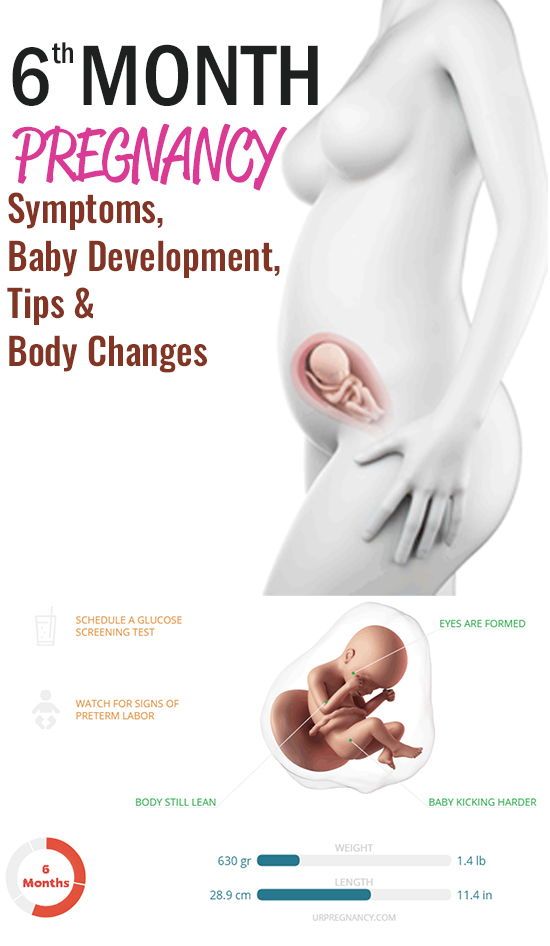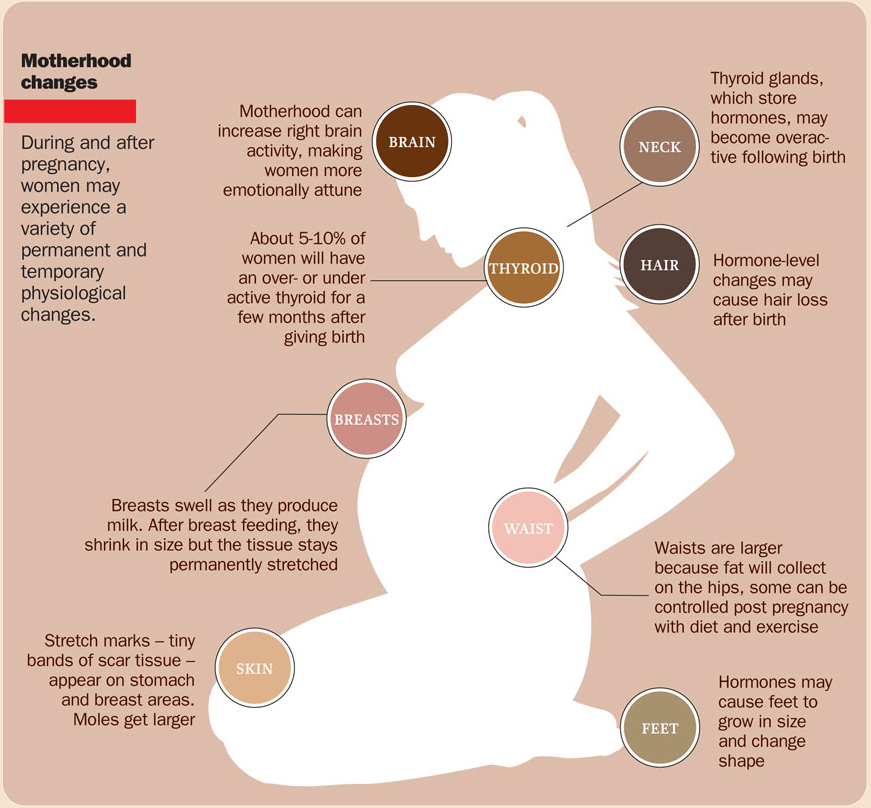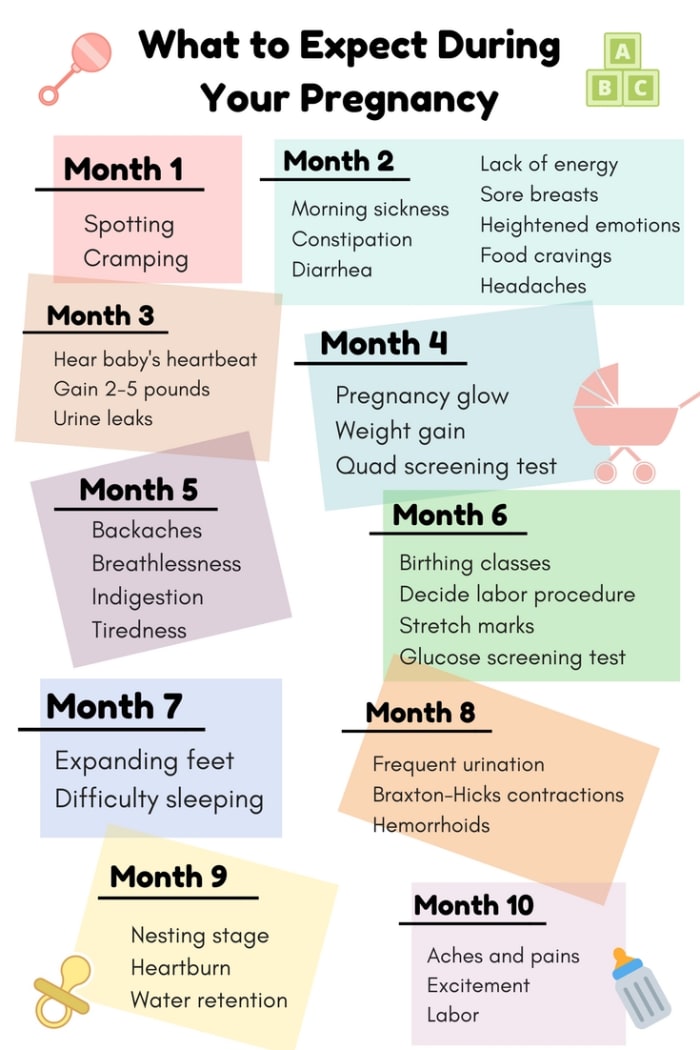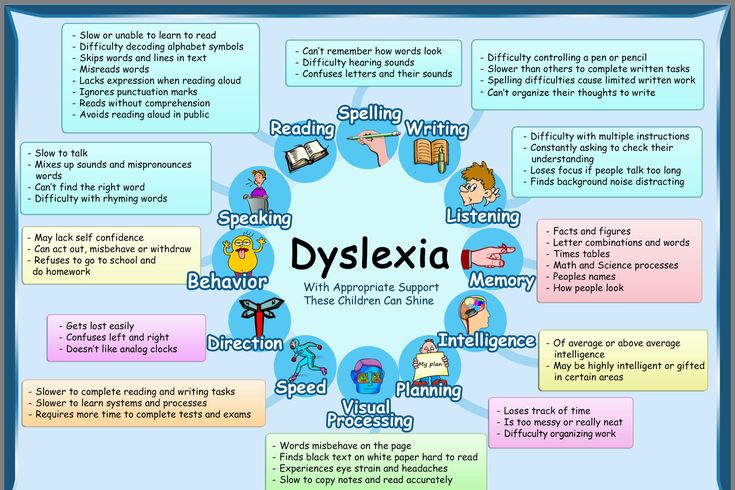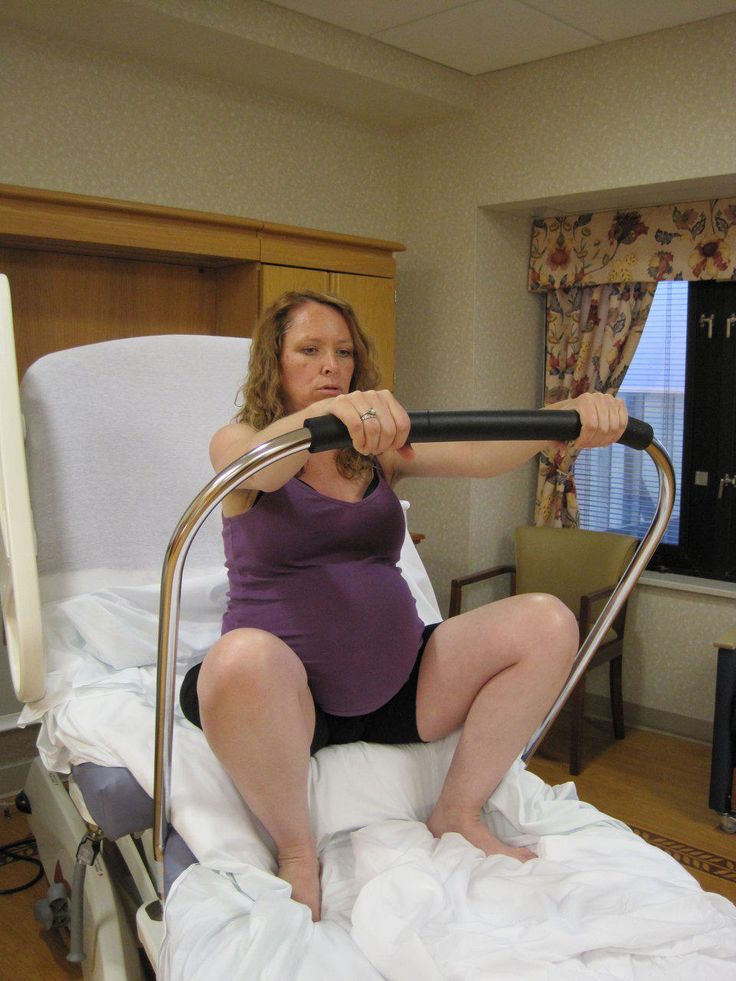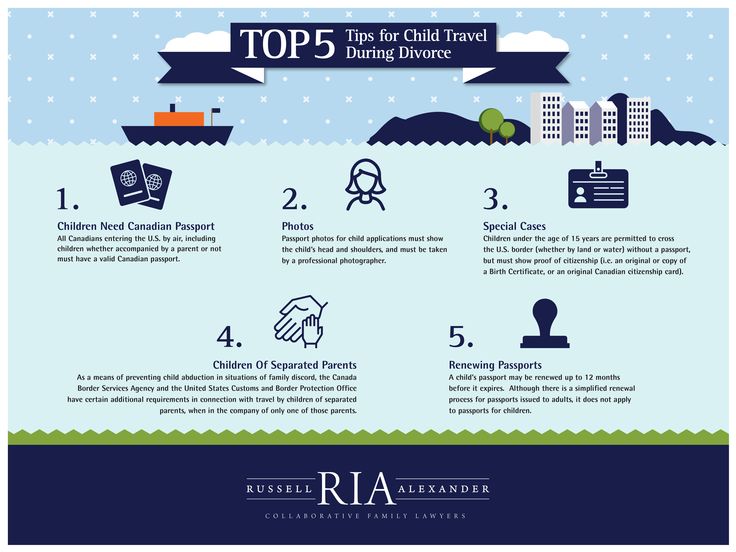My 10 month old is not crawling
when should I be concerned?
What is crawling, and why is it important?
Crawling is a developmental milestone that most babies will reach by the age of 9 months. It is one of the gross motor milestones, and it is often considered a major milestone, recognized and celebrated by parents and caregivers alike.
Crawling involves a baby being able to put their weight on their arms and legs, with their stomach pointing towards the floor while propelling themselves forward. For babies, it is a huge step forward in terms of gaining more independence and mobility. For parents and caregivers, a mobile baby means everything is suddenly within their grasp, and the serious baby proofing of a home or care environment must begin.
Crawling is considered necessary in terms of a baby’s development, not simply for what it means in terms of their physical and gross motor development. Crawling is now known to impact all areas of a baby’s development, including their balance, sensory system, coordination, problem-solving, and cognitive skills.
What is a crawling delay?
A crawling delay might be diagnosed if a baby is not crawling by a certain age. However, in general, the issue is a little more complicated than that. Some babies never crawl, and many times this is not the sign of a crawling delay, nor is it a reason to be concerned. In the field of child development, it is widely recognized that some babies miss the crawling stage completely.
Generally, a crawling delay or absence of crawling is not a red flag in itself. However, if your baby is also not meeting other physical and gross motor milestones and is showing signs of delay in other areas of their development, there may be cause for further investigation.
If by ten months or so your child is not crawling, but they are able to pull to standing, using furniture to assist them, if they are able to cruise or move from a piece of furniture to piece of furniture, or if they are able to ‘scoot’ and move themselves around on their bottom or while flat on their tummy- then their gross motor development would be considered as normal.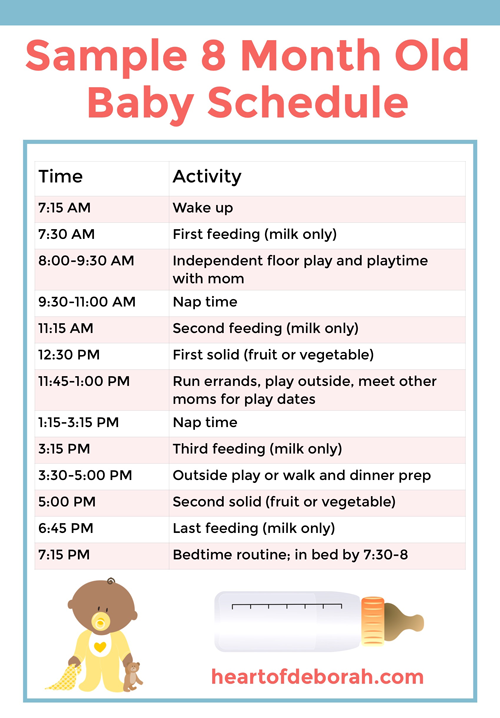
What are some of the possible causes of a crawling delay?
Premature birth: if your child was born prematurely, their developmental age might differ from their actual age. According to their due date, tracking their development rather than their birth date may show they are meeting their milestones. Premature babies may also sometimes develop their muscles slower.
Environment: does your child have opportunities to practice their gross motor and crawling skills? This means opportunities for tummy time, time spent on the floor, or on a play mat. Babies who spend large amounts of time-constrained in a stroller or chair will have fewer opportunities to play and move, both of which are crucial in developing their gross motor skills.
An underlying health condition or genetic syndrome: in some cases, a gross motor delay may be a sign of a rare disease. Pitt-Hopkins is one such syndrome. In this case, further investigation, including genetic counseling, and genetic analysis, may be necessary to understand the delay’s cause.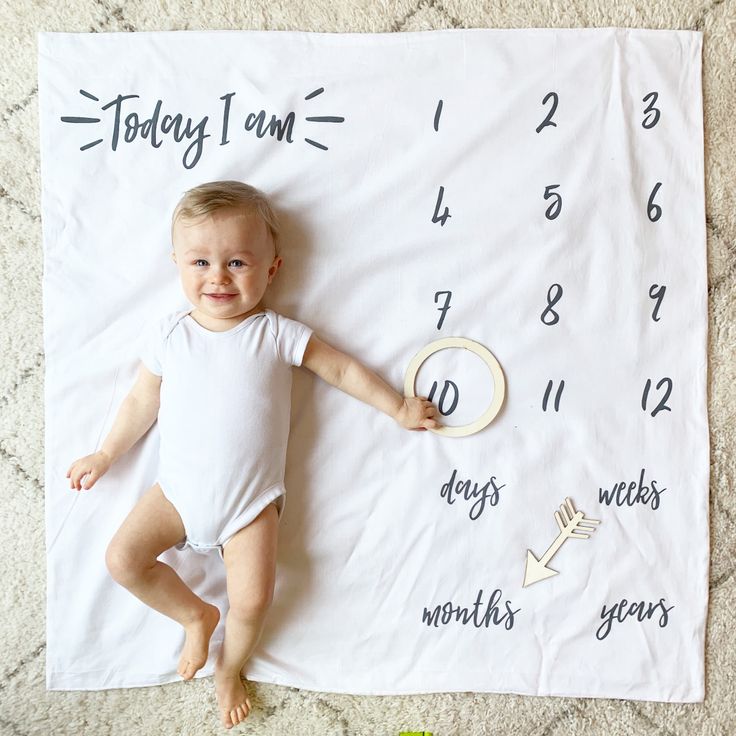
If you have any concerns about your child’s development – their crawling or any other skill – contact your family doctor, pediatrician, or other medical professionals that you trust.
Popular Articles
FDNA Telehealth can bring you closer to a diagnosis.
Schedule an online genetic counseling meeting within 72 hours!
Start Here >>
10 Normal Reasons Baby Might Not Be Crawling (And 5 Reasons To Worry)
This article was originally published on November 24, 2017. It was updated on July 24, 2020 by Kirstie Landry
Moms and dads are often overwhelmed with many different feelings the first time they hold their child after he or she has been born. After that, they usually find themselves worrying about pretty much everything.
For example, they are in a hurry to know their child's Apgar score. For those who do not know, this is a test that healthcare professionals give newborns. According to kidshealth.com, it checks their heart rate, as well as some other things.
Furthermore, they also want to know how their bundle of joy compares to other babies who are around the same age. Parents also ask themselves if their child is getting enough milk, or if he or she is opening their eyes at the right time in their life.
New parents usually want to know if their child is reaching all of the developmental milestones that they should be reaching and if they are doing it at the right time. Furthermore, they might even begin to feel some anxiety if they believe that something is not right with their baby. Also, many parents feel as though they are at a loss if they think their baby is not doing something that an article on the internet said that they should be doing.
Something they should know is that some delays are considered to be normal. There are a lot of external and internal factors that can affect when a child reaches a certain milestone. When it comes to a baby starting to crawl, and eventually walking, their parents want to know what they can do to encourage the child, or if they can do anything at all.
There are a lot of external and internal factors that can affect when a child reaches a certain milestone. When it comes to a baby starting to crawl, and eventually walking, their parents want to know what they can do to encourage the child, or if they can do anything at all.
If a baby is not crawling when they should be, their parents might wonder why that's the case. They also might want to know what they can do to help, as well as what kind of things they should be worried about when it comes to their baby crawling.
There are some people who believe that crawling is not essential to a baby's development, but others believe that it is. There are normal reasons why a baby may not be crawling, and those are usually things parents do not need to worry about. However, there are also other reasons why children may not be crawling, many of which are definitely things parents should worry about.
15/15 Baby's Feet Are Curved Inward
via Scottishrightshospital.orgThere are some things parents should be looking out for before the baby begins to crawl, and curved feet is one of them.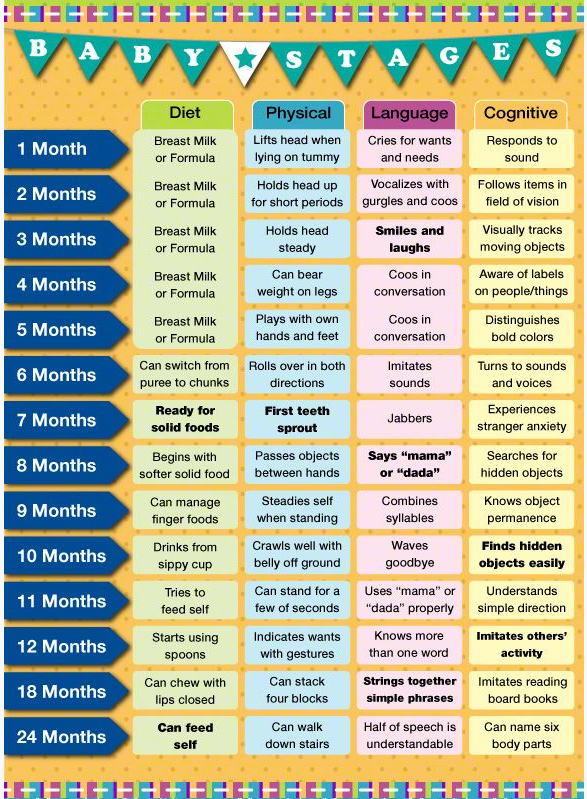 In some cases, a baby may be born with feet that are slightly curved inwards.
In some cases, a baby may be born with feet that are slightly curved inwards.
As a result of being cramped in the womb, babies only begin stretching out gradually over the weeks and months that follow the birth. If natural extension does not happen by the time he is ready to roll on his belly, it can be discouraging for the baby, and it can impede the little one's regular movements, including the propensity to get up on his knees.
What parents can do: Parents can verify if their baby's curvature is within normal limits. Askdrsears.com suggests to do the following:
- They can pick the baby's feet up and look at the soles. It’s normal for the front of the foot to be curved, so they do not need to worry if it is.
- Then, they should hold the heel of the baby’s foot with one hand and gently stretch the front of the foot so that it is as straight as it can be.
- If the foot straightens easily with gentle stretching, the curvature is considered normal and it will begin to correct itself within a few months.

- To help the feet straighten, parents should continue doing those stretches with their little one whenever they are changing their diaper, and they should also ensure that the child does not sleep in the fetal position often.
If the baby's bones are flexible, the pediatrician will be able to gently pull the feet into a straight position. In more rare cases the bones can be rigid and may require additional therapy from an orthopedic pediatrician, or physical therapist.
14/15 Baby's Feet Are Too Flat
via Needpix.comAnother physical impediment that may delay baby's crawling and eventually getting up on his or her feet also has to do with the shape of the baby's foot. Flat feet in babies are more common than one would think, but they usually do not have flat feet for very long.
If a person's baby has flat feet, that can cause them to start crawling much later than babies who don't have flat feet, according to parenting.firstcry.com. One important thing parents might be relieved to find out is that children who have flat feet usually develop arches by the time they reach their third birthday.
What parents can do: Treatment is rarely needed except in the most severe cases, which a doctor will be able to identify. In most cases, children who have flat feet will actually have normal feet by the time they turn six, according to healthychildren.org.
But there are times when that does not happen, and parents might wonder if they should seek some form of treatment. Children will likely not receive any treatment for this unless their feet are stiff, or they are experiencing some pain. Furthermore, putting inserts in their shoes can end up causing more problems than what the child had to begin with.
But, not all flat feet are the same, and some of them do need some kind of treatment. For example, a child might experience a bit of tightness in their heel cord (which is referred to as the Achilles tendon), and that can put a limit on the amount of moving that particular foot can do. Also, some little ones might have rigid feet as well. This kind of thing can cause them a lot of pain, and sometimes it can keep them from moving their foot a certain way.
13/15 Not Enough Tummy Time
via Needpix.comThere are plenty of things parents need to know about tummy time, including the fact that it can help babies reach the crawling stage, according to zerotothree.org.
According to nytimes.com, it appears that children who do not spend much time on their stomachs have significantly weaker back and arm muscles than those who get plenty of time on their stomachs. That is because parents have started making their babies sleep on their backs since that puts them at less of a risk of developing SIDS.
Those who sleep on their stomachs are more likely to develop SIDS, which is why some parents might not lay their children on their stomachs. Since that is the case, there are many little ones who might skip the whole crawling stage altogether, and go straight to walking.
What parents can do: Moms and dads should keep their baby on its back during sleep time, but encourage as much time as possible on the tummy when the baby is awake. This is a great way to ensure their safety while helping them build the strength they need to crawl.
This is a great way to ensure their safety while helping them build the strength they need to crawl.
12/15 Baby Is A Non-Crawler
via PexelsIn light of the reduced tummy-time during sleep and naps parents are encouraged to practice, many babies go directly from scooting, or dragging themselves with their hands, to pulling themselves up when they are ready for further exploration. In addition to this, some babies are simply born as non-crawlers, according to todaysparent.com.
The reality is, although occupational therapists consider crawling a cornerstone of the baby's physical development, it is not really considered a milestone because not all babies crawl. Some people believe this phase is essential for the child's gross and fine motor development later in life, and that skipping this phase may cause certain delays in the future. In truth, it is only considered an issue after the baby has reached a certain age, and that is only when they also have not discovered other ways to move about when placed on a floor, according to kidsinthehouse. com.
com.
This can be a stressful thing for parents during a time when there is already so much for them to worry about, but their pediatrician will only ask them to pursue further testing if a child is nearly 12 months and not attempting to either crawl or pull themselves up. Most doctors will be very reassuring in letting parents know that it is ok if a baby is a non-crawler.
What parents can do: They can keep a close eye on their baby's mobility, and encourage movement with simple exercises. They should contact the pediatrician if they notice that their little one is not crawling or attempting to pull themselves up when they are almost a year old.
11/15 Baby Is Not Given A Chance To Try
via WallpaperflareIn some cases, parents simply don't give their babies the chance to try to crawl, or the opportunity to improve muscle movement and strength. While it is perfectly fine for moms and dads to hold their babies, there are some negative things that can happen if they are doing that all the time.
In addition, parents are not the only ones who love holding babies. Grandparents and older siblings are often guilty of doing this as well, and the truth is that babies need to have some time when they are not in a person's arms. That is because when they have a little bit of freedom, they can develop the strength that they will need to begin crawling, as well as walking.
It is extremely important that babies are able to explore their surroundings (with supervision, of course). According to healthline.com, it is good for babies to spend some time on the floor if they have not yet mastered the art of crawling. For some parents, this might mean that they need to hold their babies a little bit less, and put them on the floor.
Furthermore, it is a good idea for moms and dads to try to make sure that the area in which their baby spends time on the floor is comfortable enough for them. They should also place some of the child's toys nearby, so they'll try to crawl to them.
What parents can do: In addition to making sure kids get some time out of a person's arms, they can also reduce the time their child spends in walkers. The same goes for bouncers, as well as any other seat that will keep the baby confined to one spot.
10/15 Baby's Personality
via Wikimedia CommonsEveryone has different personalities, and that is even true when it comes to babies. While some people are very active, and they are in a hurry to do things, others are a bit more laidback, and the truth is that even some infants can be like that is well. When parents are wondering why their little one is not crawling, they should take their personality into consideration.
That is because children who are a bit more laidback than others will likely not be in such a rush to reach certain milestones, according to todaysparent.com. But their parents should relax instead of worrying about it. Kids like this will eventually start crawling.
What parents can do: They can not change a baby's character, but they can encourage their baby to move by ensuring a safe environment and stimulating activities like, listening to music, as well as with play dates with older babies. They may also mimic crawling moves for their little ones.
They may also mimic crawling moves for their little ones.
9/15 Baby's Weight
via FlickrBeing at a healthy weight is something that everyone should strive for. However, this is something that is particularly important for babies. Being at the right weight is something that they need to do in order to reach certain physical milestones, and that is also something that can affect when they begin to crawl, or even if they start to do so at all.
Slightly overweight babies are usually very cute, but what their parents are not thinking of is the fact that their weight can be very harmful to them. Babies that are overweight might have more trouble doing certain things, like crawling, than others do.
According to reuters.com, a doctoral student in nutrition epidemiology at the University of North Carolina at Chapel Hill, along with some of her colleagues, studied this type of thing, and they came to an interesting conclusion.
- Meghan Slining and her team evaluated 215 babies on several occasions up to 18 months old, and of the 152 infants found to be overweight, 20% (31) had delayed motor skills.

- The team also found that 75 babies with high average measures of the belly, upper-arm, and upper-back skin fat, 23 percent (17 infants) had delayed motor skills.
- In conclusion: motor skill delays such as an inability to sit steadily for 30 seconds were about twice as likely in overweight infants than in those who had a normal amount of weight and fat on their bodies.
It seems logical that babies who weigh more have increased difficulty in mobility as they have more weight to move around and lift off the ground.
What parents can do: Encourage a baby's movements by playing with them and placing their favorite toys and objects at a reasonable distance from him to move towards.
8/15 Baby's Clothes Are Uncomfortable
via Needpix.comIt stands to reason that if a baby is wearing uncomfortable clothes, his or her mobility will be reduced. Whether this may be a onesie that is too tight or socks that are too loose, the baby will be discouraged from crawling or walking if he does not feel at ease and confident about his movements.
One impediment parents rarely think of that might limit the baby's progress in mobility is the diaper. Why would they? It makes things so much easier, right? Well, according to ncbi.nlm.nih.gov, diapers introduce bulk between the legs, potentially exacerbating infants’ poor balance and wide stance.
There is evidence that suggests that there is a link between the diapers that infants wear, as well as their ability to crawl and walk. It is possible that diapers might be disruptive to little ones who are still trying to learn how to walk.
Since crawling is also something that requires a lot of use of the legs, it's also possible that crawling could be affected by the diapers a baby wears. This is something parents might want to keep in mind if their child has not started crawling yet.
RELATED: 10 Perfectly Normal Reasons Why Your Baby Is Crying Uncontrollably
What parents can do: Moms and dads can make sure their baby is wearing comfortable clothes he can move in with ease. These clothes should also allow him to grip with his toes. They can also allow the baby crawl naked for a few minutes a day to encourage increased mobility.
These clothes should also allow him to grip with his toes. They can also allow the baby crawl naked for a few minutes a day to encourage increased mobility.
7/15 Baby Moves In Other Ways
via Air Force Medical ServiceIt is perfectly natural for moms and dads to begin worrying if their child is getting to the stage during which they believe that he or she should begin crawling, and yet they have not seen any evidence that their little one is ready to crawl yet. However, this is not always something that they should be particularly concerned about since that does not necessarily mean something bad is going on.
According to parents.com, there are some babies out there who just might not crawl at all, and that does not mean something is wrong with them. Just like adults, each baby is unique.
There are some children out there who are perfectly happy with finding other ways for themselves to move about on the floor. For example, if a little one does not crawl, they might do something like use their bottom to scoot across the floor.
There are also other ways in which they can show signs that they are becoming mobile as well. While it is understandable for moms and dads to worry about things like this, they really do not need to worry, especially if their little one is meeting all of the other milestones that little ones are supposed to meet.
Some of those milestones include the baby pulling themselves up, as well as learning what they can do with their hands. If a child is doing all of that, he or she should be fine.
What parents can do: If they notice their baby is not mobile at all, they may want to stimulate movements with simple exercises like stretching out the legs, support him sitting up, or placing the palms of their hands behind the baby's feet when he is on all fours.
6/15 Baby Was Born Prematurely
via Needpix.comBeing born prematurely can affect many different things. For those who do not know, a baby who is born before the 37th week of gestation is typically considered to be a premature baby, since most pregnancies tend to last approximately 40 weeks.
This is something that parents must keep in mind when they are trying to figure out when their little one should be reaching certain milestones since a premature baby should not be expected to reach those milestones during the same point in their lives that a baby who was born at the end of a 40-week pregnancy would.
One must take a child's adjusted age into consideration when they are thinking about when the child should be crawling. That is because premature babies who are 4 months old are not likely to be doing the same things that a non-premature 4-month-old baby is doing, according to webmd.com.
This just means that babies who are born a bit early are very likely to need a little bit of extra time to begin doing certain things, and crawling might be one of them. Being born prematurely can certainly have an impact on when a baby starts to crawl, but this is not something parents should worry about since they do usually catch up to their peers.
What parents can do: Follow all suggestions for children born to term, but do not force the baby to crawl if he is not physically ready to move, nor compare him to babies born at full-term.
5/15 Baby's Legs Are Stiff (Hypertonicity)
via healthcare-online.orgHypertonicity can severely hinder a child from movement. Also known as Stiff Baby Syndrome (SBS), hypertonia, or hyperexplexia, it occurs when muscles are extremely tight, according to katherinerosman.com. It is a serious matter because it is not only a physical problem but a nerve and brain issue as well.
Some babies who are born with Stiff Baby Syndrome are unable to stretch their legs out, or even put their arms over their heads. The only time their bodies are able to relax is when they are sleeping. In more extreme cases of SBS, it also becomes difficult for a baby to swallow.
Parents may also realize their infant holds his hands in fists or is unable to relax his legs. Likewise, he may have difficulty releasing an object and moving from one position to another. Babies with SBS may also cross their legs when they are being picked up.
The good news is that at this very young age, babies have the capability of re-routing their brains if therapy starts immediately after they get a diagnosis. Take note, however, that not all babies with stiff legs may be affected by SBS, and sometimes daily massages at home may be enough to release tension in the legs.
What parents can do: The first thing a parent should do if they suspect their baby to be affected by SBS is call the pediatrician. The doctor will most likely refer the baby to a physical therapist who will work with the baby and the parents. Therapy may last for the duration of the child’s development.
4/15 Baby's Legs Are Not Toned Or Are Weak
via UnsplashWhile there are some babies that are hypertonic, there are also others that are the complete opposite of that. While hypertonic babies are very rigid, hypotonic infants have poor muscle tone.
According to healthline.com, this condition is sometimes also referred to as "floppy muscle syndrome. " This is something that is typically very obvious at birth.
" This is something that is typically very obvious at birth.
This is not something that is hard to recognize since this condition affects a child's muscle strength, as well as their brain. It can also have an impact on their motor nerves as well.
One thing parents should definitely know about this condition is that it can affect children of any age. Some of the signs that usually present themselves in a child with this condition include a delay in crawling (as well as other milestones), in addition to poor head control and poor reflexes.
What parents can do: If they see that their baby is having some trouble when he is placed on his tummy and is unable to come into a tabletop position, they can initiate simple muscle strengthening exercises for him to do at home. If they suspect the issue is much more serious, or if the child does not progress in his movements, then they should contact the pediatrician, who will then refer them to a specialist.
3/15 It Could Be A Hip Problem
via Public Domain PicturesBabies want to start exploring their surroundings shortly after they leave their mother's womb, but their bodies usually will not allow that to happen until their muscles and joints are ready for it. This is why most babies tend to crawl or scoot around on the floor before they begin to walk.
This is why most babies tend to crawl or scoot around on the floor before they begin to walk.
By the time a child reaches the age of 9 or 10 months old, they should be crawling. However, there are some things that can affect when a child starts doing this, such as issues with their hips.
According to dynamicchiropractic.com, a delay in crawling can be a sign of a serious problem. It could mean that the child has congenital hip dislocation.
But on the other hand, this could point to some other serious conditions as well. While a delay is crawling is not always something parents need to be concerned about, it is something they should speak with their pediatrician about since it could be a sign of a serious underlying condition.
2/15 It Could Be Cerebral Palsy
via Wallpaper FlareIf parents notice that their child has not started crawling after a while, they should take the child to his or her pediatrician. While this is not always something that moms and dads should worry about, it can also be a sign that the little one has some kind of developmental disorder, such as cerebral palsy.
According to cerebralpalsyguide.com, this can actually cause children to have a delay in many things, not just crawling. If they do not kick, or they have issues moving their eyes, that could be a sign that they have cerebral palsy. Other indicators of this condition are a failure to smile after they have reached three months of age, as well as a delay in walking.
What parents can do: Moms and dads who believe that their child might have a developmental motor disorder should speak to their pediatrician as soon as they can. They should seek out one that is compassionate, as well as one that has plenty of experience in treating motor disorders.
1/15 Baby Is Late In Other Milestones
via hatfielddcchgroup.org.ukIf a child is not crawling, but they are reaching other milestones, then they are probably fine. In cases like that, parents usually do not have much to worry about.
But this can be a bit more serious if the child in question is also experiencing a delay with those other milestones. According to parenting.firstcry.com, a delay in certain milestones can keep kids from starting to crawl. That is especially true for the ones that are supposed to develop the muscles a child has in their neck.
According to parenting.firstcry.com, a delay in certain milestones can keep kids from starting to crawl. That is especially true for the ones that are supposed to develop the muscles a child has in their neck.
What parents do: Parents can watch their child to see if they reach any other important milestones. If they suspect their baby is not reaching other important developmental milestones, they should make an appointment with the pediatrician.
READ NEXT: 5 Normal Reasons Why A Baby Might Not Be Walking (& 5 Signs That Should Be Cause For Concern)
Sources: Kidshealth.com, Ask Dr. Sears, Parenting.firstcry.com, Healthychildren.org, Zero To Three, The New York Times, Today's Parent, Kidsinthehouse, Healthline, Reuters, NCBI, Parents, WebMD, Katherine Rosman, Dynamic Chiropractic, Cerebral Palsy Guide
The child (does not) want to crawl: wait, help, worry?
Moving on all fours is a useful, but not necessary stage of development, and it is definitely not worth rushing the child
Mothers, fathers and other close relatives are looking forward to the first steps of the child. But usually, before getting to his feet, the baby tries to crawl, on all fours or in a plastunsky way. How important is this stage of development, what should parents pay attention to and how to ensure the safety of the baby, given his new skills? nine0006
But usually, before getting to his feet, the baby tries to crawl, on all fours or in a plastunsky way. How important is this stage of development, what should parents pay attention to and how to ensure the safety of the baby, given his new skills? nine0006
Babies start to crawl when they are ready to
Many children make their first attempts to get on all fours as early as 5 months, and the stage of crawling begins, according to WHO, in the interval from 5 to 13 months.
Babies sometimes skip crawling on all fours altogether, and this is also quite normal. Some children begin to learn to stand and take steps with support as early as 8 months. The child may also learn a different method of movement, such as sliding across the floor on their stomach or rolling. In such children, the need for crawling may not appear at all, or they master it after they learn to walk. nine0003
Therefore, do not worry, let alone rush the baby. First, the muscles of the legs, arms and back should get stronger, stable neuromuscular and neural connections, a sense of space and coordination of movements should be formed.
All this requires time and a lot of work of the whole organism. Therefore, in particular, premature babies begin to crawl later, at about 10 months of age.
The timing may also depend on the characteristics of the child's perception. Active kinesthetic children, who experience the world primarily tactilely, begin to crawl a little earlier than auditory and visual children, for whom it is more important to observe and listen than to immediately start taking action. nine0003
Crawling develops the baby and brings him pleasure
Crawling is an important milestone in the development of the baby and the first step towards his mobility and independence. The ability to move independently is a great achievement, which also gives the child pleasure, increases his self-esteem and satisfies the natural craving for knowledge of the world. The ability to crawl expands the range of impressions of the baby and stimulates his emotional development.
While crawling, children learn to navigate in space, correctly assess the distance to objects and overcome obstacles.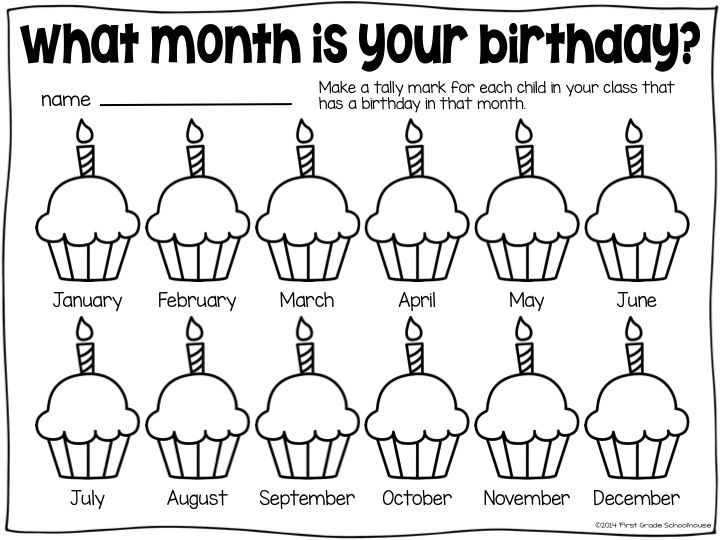 They learn that, for example, you can get to the toy basket by going around the table and chair. nine0003
They learn that, for example, you can get to the toy basket by going around the table and chair. nine0003
Crawling also helps the child develop physically.
- This is an excellent exercise for the muscles of the hips, wrists, neck and abdomen, which forms a harmonious musculoskeletal system.
- Walking on all fours teaches weight transfer and balance.
- The alternating movement pattern (alternate movement of the right and left limbs) is useful for brain development, because for this both hemispheres must work in harmony. nine0030
- Crawling promotes a physiologically correct position of the hips, which is important for correct posture in the future.
- Crawling has a positive effect on the flexibility of the spine and coordination of movements, preparing the child for the next stage - walking.
How to tell when a child is ready
Children need to learn other movements and postures before they can walk on all fours. The first of the conditions for the transition to crawling is the ability to hold your head while lying on your stomach. This skill develops around 2-3 months, when the neck muscles become strong enough. nine0003
The first of the conditions for the transition to crawling is the ability to hold your head while lying on your stomach. This skill develops around 2-3 months, when the neck muscles become strong enough. nine0003
Then comes the turn of walking on the stomach. The child pushes off with his legs or arms from the stop (it can be a wall or parental palms) and slides forward or backward on the floor. Alternatively, the baby begins to move in a plastunsky way: he pulls up one leg, then the other, while raking his arms.
There are other signs that the baby will soon be ready to start crawling on all fours: he is already easily turning over from his stomach to his back and back, tucking his arms and legs under him and trying to rise, leaning on his elbows and knees. nine0003
How to encourage a baby to crawl
Since there are so many benefits to moving on all fours, it is worth encouraging the child to master this skill. But at the same time, it is necessary to wait for the child to "mature" and want to - first sit down, and then crawl and walk. It is definitely not necessary to rush the baby, but you can create conditions for him to stimulate crawling. Here's what parents can do.
It is definitely not necessary to rush the baby, but you can create conditions for him to stimulate crawling. Here's what parents can do.
- Place your baby on your stomach more often to strengthen your muscles. Some babies don't like lying on their stomach at first, so try to make the time spent in this position interesting. Spread your favorite toys and bright new items around for the best motivation to crawl up and explore. nine0030
- Have your child spend more time on the floor. To make him more comfortable, exclude drafts and lay a rug or blanket. A soft bed, especially one with bumpers, provides much less incentive to crawl.
- Sit on the floor and let the baby climb up your legs. This is also an interesting and feasible obstacle for the baby.
- Lead by example and start crawling yourself! Seeing a role model in front of their eyes, the baby is more likely to want to master this skill. nine0030
- If you don't feel like crawling yourself, try inviting an older child who can already crawl.
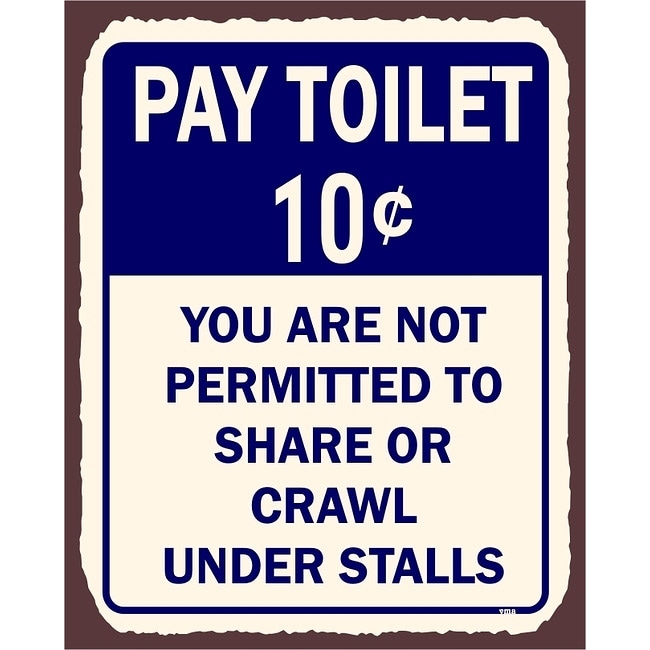 Perhaps the spirit of competition will make the task more interesting.
Perhaps the spirit of competition will make the task more interesting.
https://www.youtube.com/embed/1T3RHuPB_cg
How to stay safe
Once having discovered new possibilities, the little explorer will look into every corner he can reach, want to crawl under a table or bed, touch everything, what is within his reach. Therefore, the safety of the child now needs to be given even more attention. Here's a little checklist to help make sure the house is ready for a young explorer. nine0003
- Check the security of the sockets, fasten the electrical cables, hide or put away higher.
- If plant pots are on the floor, move them where the child can't reach them. It is also better to remove low-hanging shoots of ampelous plants.
- Keep cleaning products, cosmetics and medicines locked up or moved up.
- When the baby is on the floor, keep rooms that are not suitable for baby crawling (such as the kitchen) closed.
 nine0030
nine0030
- Buy lockers for chests of drawers, lockers (so that they don't open) and doors (so that, on the contrary, they don't close and the baby doesn't pinch his fingers).
- Give up tablecloths for a while.
- Keep small and sharp objects away. For sharp corners of tables, bedside tables, stools and other pieces of furniture, you can buy special plastic pads so that the child does not get hurt. They will be useful later - when he starts walking.
But it’s not worth striving for perfect cleanliness at home - studies show that children who encountered household microbes, as well as dust and animal hair in their first year of life, are less likely to get asthma and suffer from allergies than those who grew up in an environment, close to sterile.
Although some babies skip crawling altogether, beware if the baby is not developing their mobility in other ways, such as walking on their stomach or rolling to their destination. nine0003
nine0003
If this has not happened by the age of one, or if it seems to you that the child is crawling in some strange way (for example, pulling up one side of the body), then it is necessary to consult a pediatrician.
Photo: Collection / iStock
step-by-step instructions and advice from pediatricians
any problems? And every time the doctor reassures the parents that there is no reason for concern, it is worth waiting a bit, and the baby will definitely crawl on the bellies or on all fours. But if a mother really wants her child to quickly master a new skill, we have put together a small step-by-step instruction on this matter. nine0003
Step-by-step instructions on how to teach a child to crawl on all fours
Step 1. Assess the readiness of the child to crawl on all fours
Doctors do not tire of repeating: all children develop in different ways. Someone famously crosses the room on all fours to the delight of their parents at 7 months, someone already at 8 months is trying to get up and even take their first steps, holding on to the side of the crib, and someone at this age even sits badly, every now and then tend to fall somewhere. There is no need to worry and wind yourself up if the baby does not want to crawl on the bellies or on all fours in any way - some children generally bypass this stage and immediately go to the first steps. nine0003
There is no need to worry and wind yourself up if the baby does not want to crawl on the bellies or on all fours in any way - some children generally bypass this stage and immediately go to the first steps. nine0003
So how do you know if your baby is ready to start crawling? If the baby is already 7-8 months old, he is actively spinning and trying to get to know the world as soon as possible, then you can lower him to the warm floor. Just do not need any walkers or jumpers, it is better to sit on the floor next to the child and try to look at the world around him through his eyes.
Step 2. Create Motivation
Before you start crawling, prepare the space. Remove all sharp and fragile objects, wires, make sure that the baby does not hit the corner or knock over something heavy. Well, if there is a warm carpet on the floor, if not, then make sure that there is no draft walking around the room. Do not forget about comfortable clothes - if the baby gets tangled in his own tights or a blouse falls off him, nothing good will come of it. Dress your child in a comfortable jumpsuit or bodysuit that will not hinder movement or drag on the floor. In summer, in hot weather, you can leave the baby in one diaper or panties at all. nine0003
Well, if there is a warm carpet on the floor, if not, then make sure that there is no draft walking around the room. Do not forget about comfortable clothes - if the baby gets tangled in his own tights or a blouse falls off him, nothing good will come of it. Dress your child in a comfortable jumpsuit or bodysuit that will not hinder movement or drag on the floor. In summer, in hot weather, you can leave the baby in one diaper or panties at all. nine0003
Back to motivation. In order for the baby to definitely want to crawl, he needs to be interested in something, to captivate him. Something bright is perfect - a toy, a balloon, a rattle, which can attract the attention of the baby, he will certainly want to touch it, and therefore try a little to get what he wants. Lay the baby on his tummy, put a toy in front of him and try to push him a little towards it. Most importantly, do not try to put the toy too far away. If the baby realizes that he cannot reach her, he will quickly lose interest. nine0003
nine0003
By the way, the position lying on the tummy is far from the only one from which babies try to crawl like a plastuna. The baby can crawl on his stomach, waving his arms and legs, he may try to push off with one arm or leg. Over time, he will definitely get up on all fours, there is no need, most importantly, to rush him.
Step 3. Let's show a master class in crawling
Surprising but true. There is no better example for a baby to crawl on all fours than a parent. So let's put aside embarrassment and adulthood, get down on all fours next to the child and begin to actively crawl near him, explaining to the baby what exactly you are doing and why it's so great and fun to do it together. Usually all children have fun in the game and soon begin to crawl. If the child still cannot stand on all fours, it's okay. We get down on the stomach and begin to crawl in a plastunsky manner. If the baby really wants to get on all fours, but so far it doesn’t work out, you can gently help him, supporting his tummy with your hand and waiting until the child gets comfortable and does not fall. nine0003
nine0003
Step 4. Teaching useful movements
In order for the baby to crawl on his bellies or on all fours as soon as possible, you can add new movements to daily exercises or during massage that will imitate crawling and stimulate muscle memory. For example, you can put the baby on the back and first alternately, and then bend and unbend his legs together. You can put a soft roller or a small pillow under the tummy and gently roll the baby, while he should rest against a hard surface with his handles. nine0003
Another effective exercise is the frog pose. To do this, you need to lay the baby on his tummy on a hard surface, and bend the legs alternately at the knees and slightly spread apart (from the side it looks like swimming “like a frog”). Gradually, you can substitute your palm so that the baby's feet rest against it, then the baby will push off and try to move forward.
If the baby is standing steadily on his elbows, then turn him over on his tummy, lift his legs slightly and push him forward a little. The main thing is not to overdo it, otherwise the baby may hit his head. nine0003
The main thing is not to overdo it, otherwise the baby may hit his head. nine0003
Step 5. We resort to tricks
If the baby is still lazy and does not want to crawl either on all fours or on all fours, you can resort to little tricks. For example, invite a friend with a small but very mobile and inquisitive child to visit, who will be happy to show your baby how great it is to crawl and explore the world. Very often, children join the game and begin to crawl "for the company."
Always take all crawling lessons and serve them as a game - you should not demand too much from the baby at once, and even more so scold him or shout if something does not work out. Once again, all children are individual, and there are no specific magical dates when the child, as if by magic, immediately begins to crawl. If you are really worried that the child is not crawling (especially if he has a general weakness of the arms and legs, he does not sit well and collapses), then it is better to seek advice from a pediatrician or neurologist. nine0003
nine0003
Frequently Asked Questions
Why is crawling on all fours important for a child's development?
— In fact, all stages of the development of a child's movements are a reflection of the maturation of the nervous system so that it can provide a person with upright posture. Sequential rearrangement of legs and arms, transfer of body weight to one side or the other - this is a simplified base on the basis of which walking is formed. Accordingly, if a child can crawl reciprocally (as described above), then it is likely that his nervous system is maturing correctly, and he will master walking. If a person is able to master walking without crawling, there is nothing wrong with that either. Early verticalization of healthy children who do not yet know how to balance well enough, using walkers, jumpers and other things, is dangerous, first of all, by the risk of injuries, including serious ones with long-term consequences, but there is evidence that this is otherwise negative affects health, no. If we talk about children with cerebral palsy, spina bifida, SMA and other diseases, then they need verticalizers for about a year as part of rehabilitation, but they are selected by specialists. Walking strengthens the back no worse than crawling - the muscles of the body work as stabilizers, - answers neurologist, epileptologist at EVIclinic and CES named after A.A. Ghazaryan Veronika Oranskaya.
If we talk about children with cerebral palsy, spina bifida, SMA and other diseases, then they need verticalizers for about a year as part of rehabilitation, but they are selected by specialists. Walking strengthens the back no worse than crawling - the muscles of the body work as stabilizers, - answers neurologist, epileptologist at EVIclinic and CES named after A.A. Ghazaryan Veronika Oranskaya.
When should I see a doctor if my child is not crawling?
- According to WHO standards, the upper limit of normal for the development of crawling on all fours in a full-term baby is 13 months. It is important to assess the development of the child as a whole. If a baby at 3 months controls his head well, at 5-6 he spins in both directions, at 7-8 he does not fall, if he is planted, he moves his legs alternately on his back, lifts them up, can push an adult with each leg - you should not worry. Otherwise, it is advisable to contact a competent doctor to assess the development of the child. Many children crawl like "wounded guerrillas", pushing off with only one foot. This is normal in most cases, but if the asymmetry in the use of the limbs is clearly visible in all movements, then you need to see a doctor. If the baby plays with toys with two handles and chats equally with both legs on the back, everything is in order, the doctor emphasizes. nine0003
Many children crawl like "wounded guerrillas", pushing off with only one foot. This is normal in most cases, but if the asymmetry in the use of the limbs is clearly visible in all movements, then you need to see a doctor. If the baby plays with toys with two handles and chats equally with both legs on the back, everything is in order, the doctor emphasizes. nine0003
Is it really necessary to teach a child to crawl on all fours?
— A healthy child should be given freedom to move. The best solution is to free the floor from dangerous objects (also exclude the possibility of them falling from above, exclude the child from accessing them, etc.) and release the baby onto it along with safe toys. The child will learn everything on his own. If a child has problems, a rehabilitation specialist should deal with him, who knows how to teach him, taking into account specific disorders of the musculoskeletal system. If you really want to, you can stimulate crawling by spreading bright toys at a distance from the child, the specialist explains.

